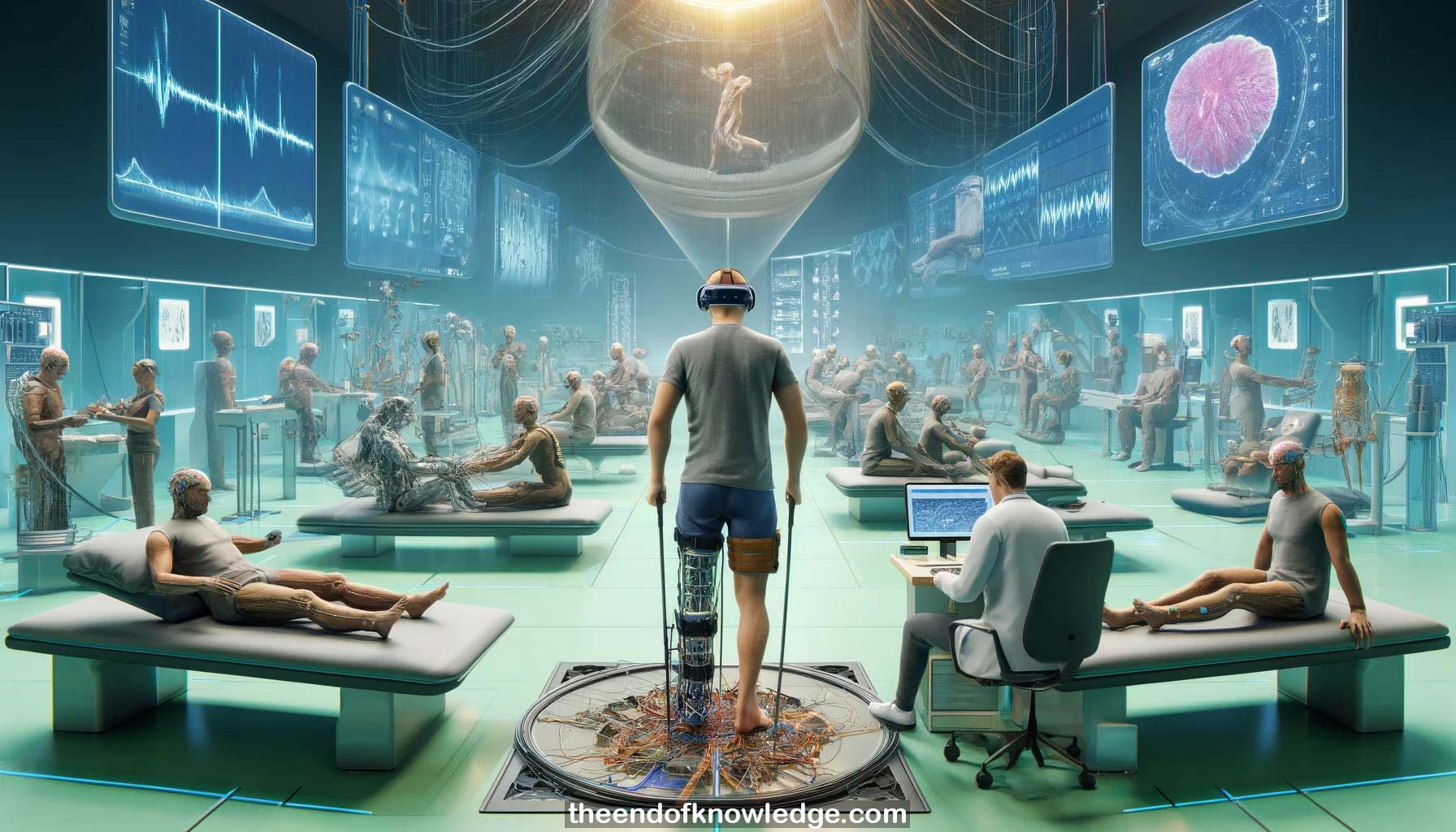 >
>
Concept Graph & Resume using Claude 3 Opus | Chat GPT4 | Llama 3:
Resume:
1.- Wosang Cho discusses lower limb stroke rehabilitation using recoveries, a BCI system, covering background, procedures, assessments, and results.
2.- Efficacy of BCI in stroke motor rehabilitation has been demonstrated in multiple meta-analyses. Recoveries previously showed success for upper limb paralysis.
3.- Lower limb and gait rehabilitation is essential for daily life. Foot drop is a common issue that makes safe walking difficult.
4.- During normal walking, dorsiflexion, plantar flexion, and inversion occur. Tibialis anterior muscle plays a key role. Foot drop prevents this.
5.- Stroke patients with foot drop have to swing their leg outward while walking to avoid catching their toe, limiting speed and safety.
6.- Recoveries aims to enable stroke patients to better control ankle movement during gait, improving walking speed and reducing injury risk.
7.- Key factors in rehabilitation include intensity, repetition, and early initiation of therapy. Recoveries leverages these principles.
8.- The BCI system detects patient's intention to move, provides feedback to move foot via FES, and the sensory feedback improves cortical plasticity.
9.- The closed-loop sensorimotor feedback enables motor recovery and improved muscle function. Combining FES, neurofeedback, and mental practice amplifies the effect.
10.- During training, a 16-channel wireless EEG records from sensorimotor areas. FES electrodes stimulate target muscles based on classifier output.
11.- Patients imagine left/right movements based on cues. EEG detects motor imagery and triggers FES to move the corresponding foot.
12.- Electrode placement over tibialis anterior is crucial. Stimulation intensity is adjusted to get foot movement with minimal discomfort and fatigue.
13.- Each trial lasts 8s - auditory cue at 0s, imagine movement for 6s, 1.5s rest. Right cue = imagine moving right foot.
14.- EEG features used are event-related desynchronization (ERD) - reduced mu/beta power during movement or motor imagery, occurring in contralateral hemisphere.
15.- After each training run, the classifier is updated using the patient's own EEG data to provide adaptive online neurofeedback.
16.- The recoveries GUI displays cues, provides real-time feedback on classification and FES triggering. Therapists monitor signal quality and patient engagement.
17.- A typical treatment includes 25 sessions, 2-3 per week over 2.5 months. Each session has 240 trials (120 FES activations).
18.- To assess improvements, various pre/post measures are used: range of motion, timed up & go, 10m walk test, video analysis.
19.- A 2022 study showed significant improvements in walking speed (timed up & go and 10m walk tests) after recoveries foot therapy.
20.- Video examples demonstrate substantial functional improvements in gait, balance and assistive device use after 25 sessions of recoveries training.
21.- Two FES electrodes are used to pass current through the muscle. A 1.5s delay accounts for the latency of ERD after cue.
22.- Recoveries is a medical device requiring supervised use after formal training, not open-source. It can supplement but not replace standard therapy.
23.- Meta-analyses suggest FES-BCI may provide larger benefits than conventional therapy alone. Recoveries foot therapy can help even severely impaired patients.
24.- Repetitive, goal-oriented FES-BCI training promotes neuroplasticity and motor learning, allowing patients to regain foot/ankle control and function.
25.- Spinal cord injury patients have also shown marked improvements with recoveries, serving as a bridge to more advanced gait therapies.
26.- The standardized recoveries protocol was developed over 7 years but can be customized. The key is intensive, repetitive, BCI-guided FES.
27.- Recoveries harnesses neuroplasticity by providing high repetitions of goal-oriented movement with sensory feedback, promoting motor learning even in chronic stroke.
28.- For foot drop, recoveries enables restored voluntary ankle control via cortical plasticity, as well as renewed strength and range of motion.
29.- By improving ankle control, recoveries gait training leads to faster, safer, more functional walking post-stroke or incomplete spinal cord injury.
30.- Recoveries is a powerful tool to restore lower limb function via BCI-FES, leveraging neuroplasticity and motor learning principles in neurorehabilitation.
Knowledge Vault built byDavid Vivancos 2024